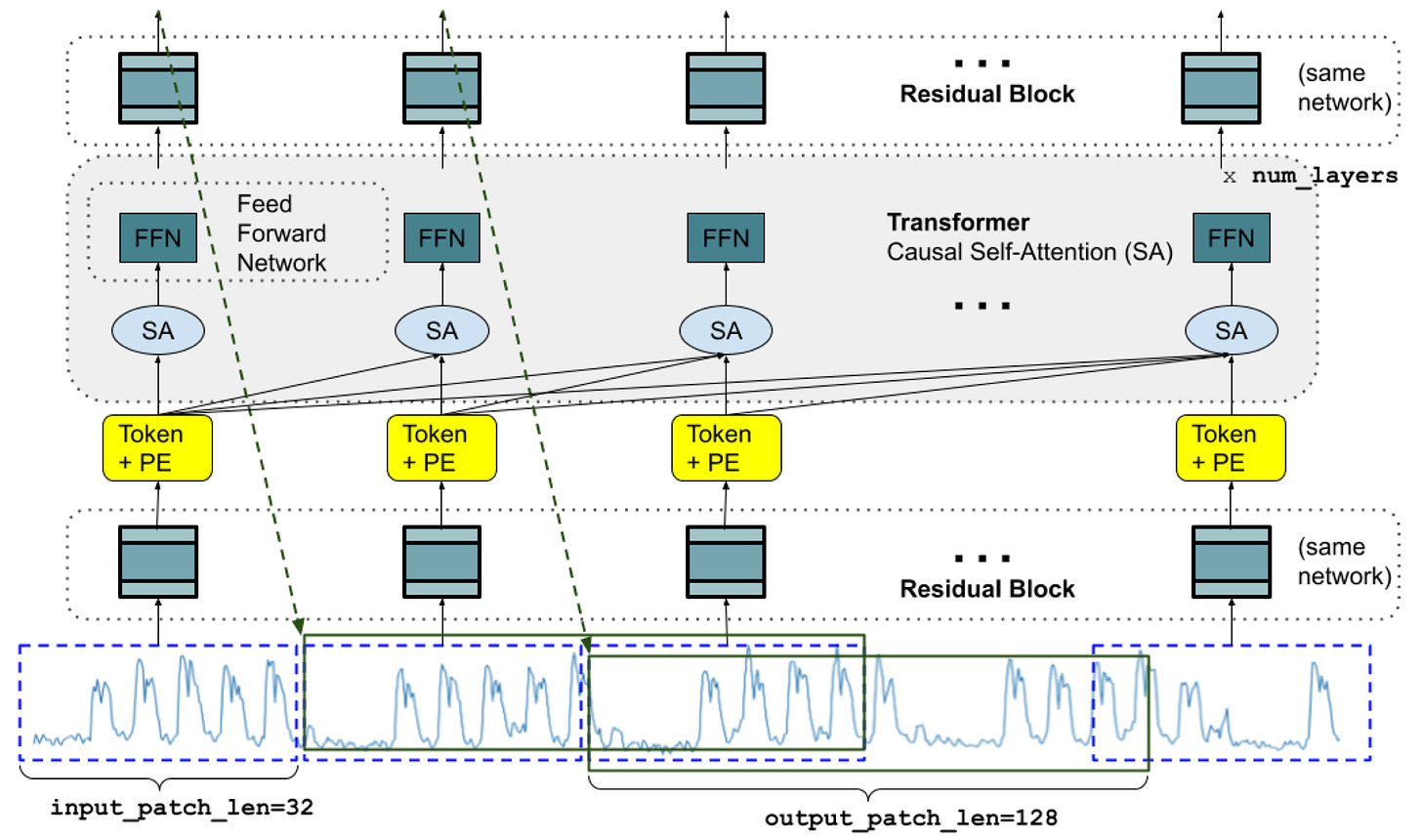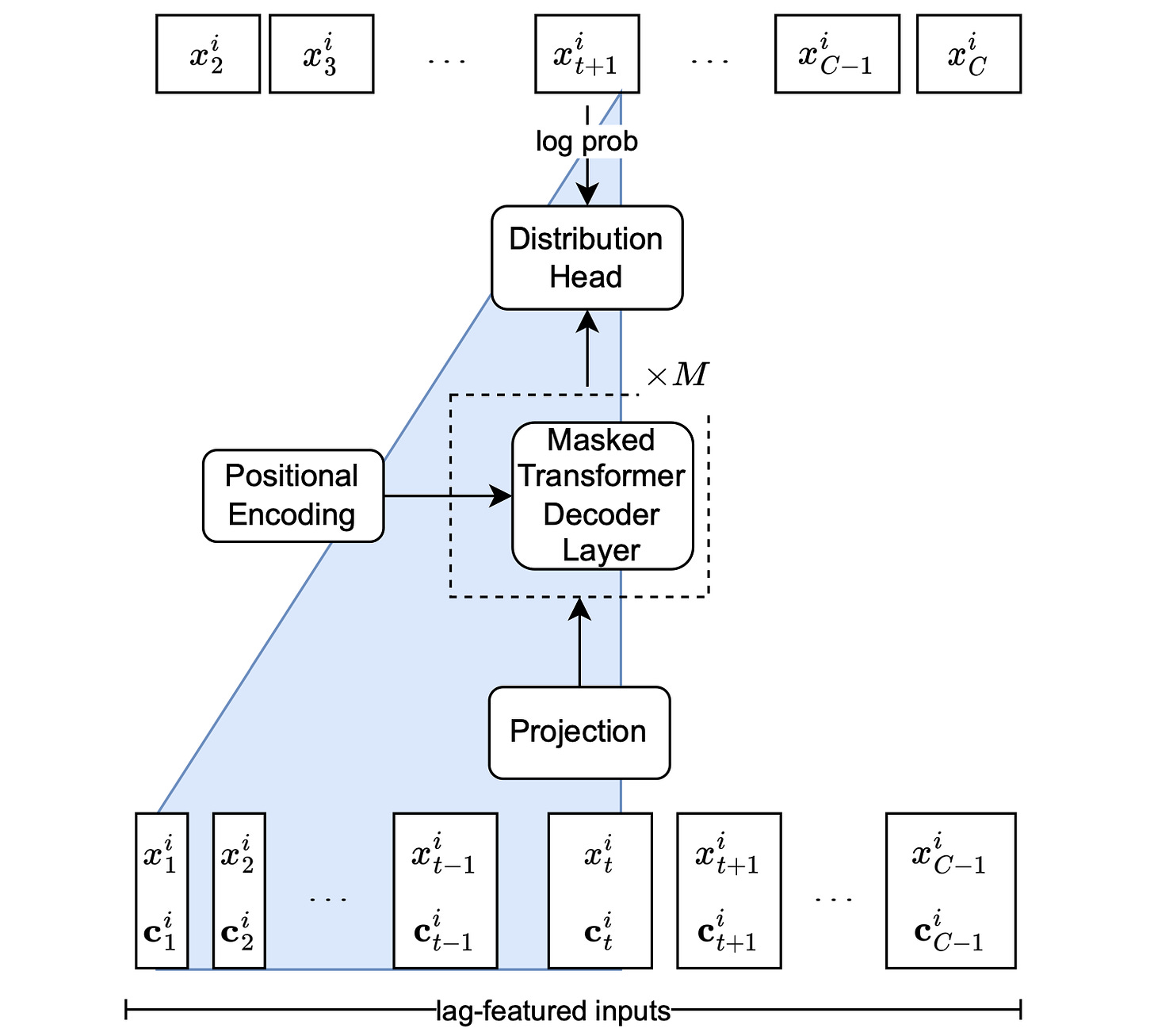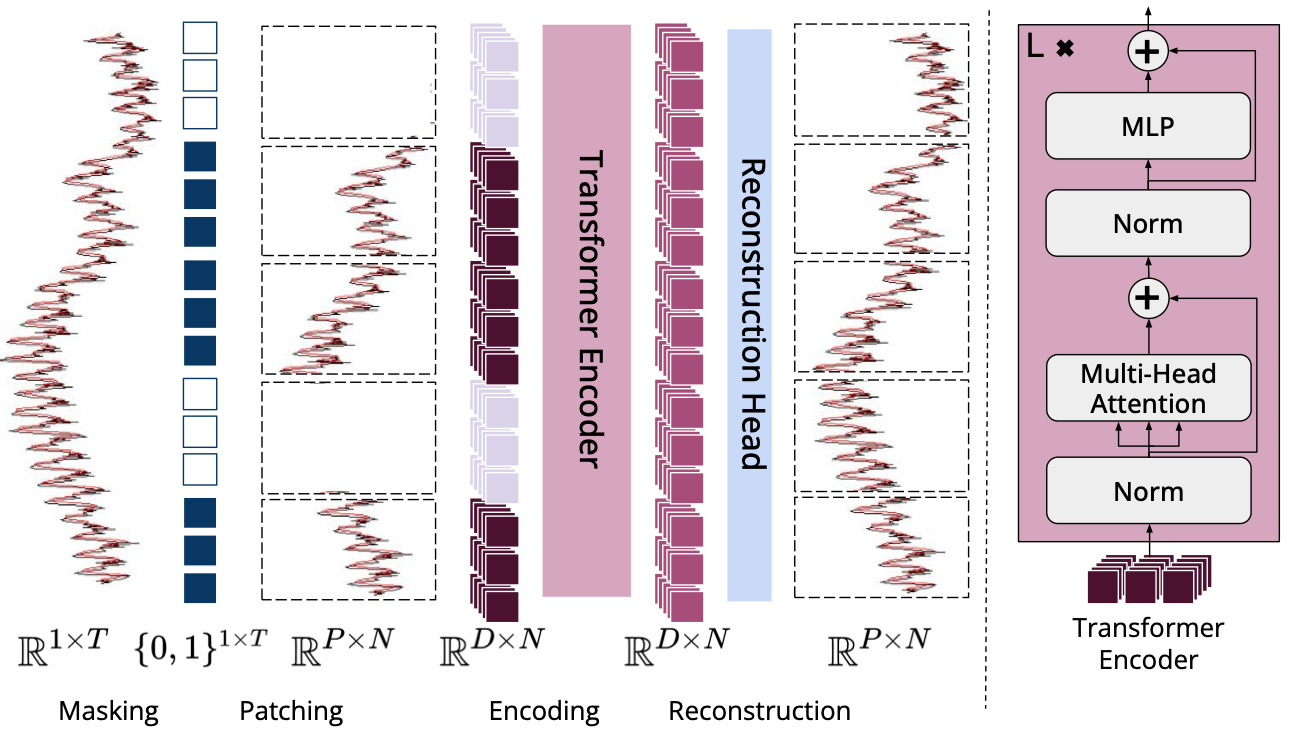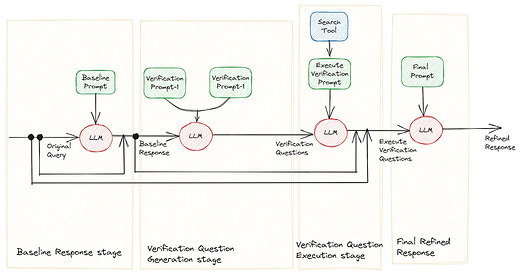

Discover more from Data Machina
Data Machina #240
Foundation Models, Transformers and Time-Series. TimesFM. Lag-Llama for TSF.. MOMENT. Mixture of Linear Experts. BUD-E Open Voice Assistants. MoneyPrinter GenAI Videos. Multimodal Ollama Cookbook.
Foundation Models, Transformers and Time-Series. Statisticians and econometricians have been searching for the Holy Grail of time-series forecasting (TSF) for more than 40 years. “Classical” models like ARIMA still work remarkably well in some TSF scenarios. But today, the cool stuff is all about transformer-based, DL & foundation models for TSF. How “good” are these new DL models for TSF? How do we evaluate these models? Do these new models really achieve SOTA performance as some papers claim? Are DL researchers cherrypicking ts datasets to easily fit a SOTA TSF DL model?...
Real world time-series data is complex, messy, and it has a lot of subtleties like: randomness of errors, trend, seasonality, linearity, and stability... Compiling a solid, large ts dataset that suits the pre-training of a large DL model is hard and expensive. Most time series data come with huge noise and poor context. Since transfer learning is one of the pillars of foundation models: How do we figure out what ”knowledge” can be actually transferred across different time series so that the foundation model learns?
But first let’s see what’s the very latest in transformer-based, DL and foundations models for TSF.
A new Foundation Model for TSF v.3. A group of Google researchers recently introduced their latest time-series foundation model for forecasting. The researchers claim that the model has out-of-the-box zero-shot capability and near SOTA performance on a variety of public datasets. Paper: A Decoder-only Foundation Model for Time-series Forecasting
A new open source Foundation Model for TSF. A few days ago, a group of researchers working at ServiceNow, open sourced Lag-Llama: the first open-source foundation model for time series forecasting. Checkout the repo, paper and notebooks here: Lag-Llama: Foundation Models for Probabilistic Time Series Forecasting.
A new family of open Foundation Models for TSF. This week, researchers at CMU introduced MOMENT. The paper describes how the model addresses the challenges of pre-training large models on time-series. Checkout the paper, and official Pycode implementation: MOMENT: A Family of Open Time-series Foundation Models.
Mixture-of-Experts for Long-term TSF. Near SOTA, or SOTA Linear-centric models for TSF are not able to adapt their prediction rules to periodic changes in time series patterns. To address this challenge, a group of Microsoft researchers proposed Mixture-of-Linear-Experts (MoLE): a Mixture-of-Experts-style augmentation for linear-centric models. The researchers claim that MoLE achieves SOTA in almost 70% of evaluations and datasets. Paper: Mixture-of-Linear-Experts for Long-term Time Series Forecasting
And now a few food for thought snippets below:
Transformers is not what you need for TSF. Curated by @valeman, a very vocal, opinionated researcher specialised in conformal prediction (checkout a gentle intro to CP) and probabilistic TSF. This is a quite interesting repository showing papers on why possibly transformers don’t work in time series forecasting. Repo: Transformers_Are_What_You_Dont_Need
Deep Learning vs Statistics for TSF. This is a great blogpost describing the pros and cons of statistical vs. DL methods for TSF, and tips on when to use DL or stats methods. Although not updated with the very latest in transformer-based, deep learning methods for TSF, the blogpost concludes that it’s early days in DL for TSF. Blogpost: Time-Series Forecasting: Deep Learning vs Statistics — Who Wins?
A tutorial on TSF evaluation for data scientists and ML people. This is a tutorial-like paper on well-proven times-series forecast evaluation techniques that are usually neglected by data scientists and ML researchers. The paper’s goal is to bridge the knowledge gap between traditional methods of forecasting and current state-of-the-art DL/ ML techniques. Forecast evaluation for data scientists: common pitfalls and best practices
A great free book on forecasting. Considered my many researchers and practitioners, “the bible” of forecasting. Written by probably one the world’s top expert in forecasting. Forecasting: Principles and Practice 3rd ed
A mega study on what works in time-series forecasting. Last year Nixtla, conducted a study on TSF with a huge ts dataset containing 100 billion time series points. Nixtla is a startup well known for its research towards achieving SOTA in TSF, and the developer behind TimeGPT, a Generative AI mode for time series. The study concluded that LightGBM significantly outperformed TimeGPT and all other DL models. What Truly Works in Time Service Forecasting: The Nixtla Mega Study
Have a nice week.
10 Link-o-Troned
Beyond Self-Attention: How a Small Model Predicts the Next Token
[brilliant :-) ]The World's Most Responsible AI Model (blog, demo)
Odyssey 2024 - Emotions Recognition Challenge with SSL Models
[watch] Fully Autonomous Androids Run by a Vision NNet in Real-time
the ML Pythonista
Deep & Other Learning Bits
AI/ DL ResearchDocs
MLOps Untangled
data v-i-s-i-o-n-s
AI startups -> radar
ML Datasets & Stuff
InstaGen: Improving Object Detection with AI Generated Synth Dataset
Ego-Exo4D- Large-scale Multi-modal, Multi-view, Video Dataset
Postscript, etc
Tips? Suggestions? Feedback? email Carlos
Curated by @ds_ldn in the middle of the night.
Subscribe to Data Machina
A weekly deep dive into the latest AI / ML research, projects & repos.















